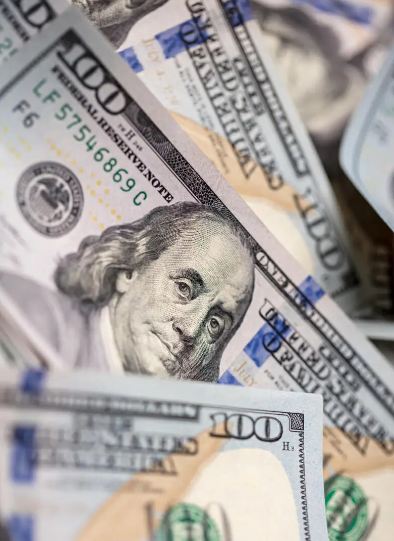High-Yield Savings Accounts vs. Other Savings Vehicles: Which Is Right for Your Money?

When it comes to saving, there’s no one-size-fits-all solution. From certificates of deposit (CDs) to stocks, each option offers a unique blend of risk, reward, and liquidity. High-yield savings accounts (HYSAs) are often hailed as a “sweet spot,” but how do they stack up against other popular savings vehicles? This in-depth comparison will help you decide where to park your money in 2025.
HYSA vs. Traditional Savings Accounts
The most straightforward comparison is with traditional savings accounts, offered by most brick-and-mortar banks. The key difference is interest rates: while HYSAs offer 4–6% APY in 2025, traditional accounts average just 0.45% APY. Over time, this gap grows significantly. For example, 10,000 in an HYSA with 5% APY earns 500 in a year, compared to $45 in a traditional account.
Traditional accounts do have one advantage: accessibility. If you value in-person banking (e.g., depositing cash at a branch), a traditional account may be worth the lower returns. However, most online HYSAs now offer mobile check deposits and ATM access, narrowing this gap.
HYSA vs. Certificates of Deposit (CDs)
CDs are time deposits: you agree to keep your money in the account for a fixed term (e.g., 3 months, 1 year, 5 years) in exchange for a fixed interest rate. In 2025, 1-year CDs often offer slightly higher rates than HYSAs (e.g., 5.5% vs. 5% APY), and longer terms (e.g., 5-year CDs) may reach 6%.
The tradeoff is liquidity: withdrawing funds from a CD before the term ends typically results in a penalty (e.g., 3–6 months of interest). This makes CDs better for long-term goals with a set timeline (e.g., a down payment on a home in 3 years). HYSAs, with their no-penalty withdrawals, are better for emergency funds or short-term goals (e.g., a vacation in 6 months).
HYSA vs. Money Market Accounts (MMAs)
Money market accounts combine features of savings and checking accounts: they offer higher rates than traditional savings accounts, check-writing privileges, and debit card access. In 2025, MMAs often have rates similar to HYSAs (4–5% APY) but may require higher minimum balances (e.g., 10,000 vs. 1,000 for an HYSA).
MMAs are ideal if you need occasional access to funds via checks or debit cards. However, they typically limit monthly transactions more strictly than HYSAs, making them less flexible for frequent use.
HYSA vs. Stocks and Bonds
Investing in stocks or bonds offers the potential for higher long-term returns, but with greater risk. The S&P 500 has averaged 7–10% annual returns over the past century, but it can swing wildly in the short term (e.g., dropping 20% in a recession). Bonds are safer than stocks but offer lower returns (e.g., 2–4% for U.S. Treasury bonds in 2025).
HYSAs, by contrast, offer guaranteed returns with no risk of principal loss (thanks to FDIC insurance). They’re better for short-term goals (1–3 years) or funds you can’t afford to lose (e.g., emergency savings). Stocks and bonds are better for long-term goals (10+ years), where market volatility has time to smooth out.
HYSA vs. Cash Management Accounts (CMAs)
CMAs, offered by robo-advisors (e.g., Betterment) and fintech companies (e.g., PayPal), combine checking and savings features with higher rates than traditional accounts. In 2025, CMAs often offer rates similar to HYSAs (4.5–5.5% APY) and may include perks like free ATM withdrawals or integration with investment accounts.
The key difference is insurance: CMAs are not always directly FDIC-insured but may partner with multiple banks to spread deposits, offering up to $1 million in coverage. This makes them a good choice for savers with large balances, but HYSAs are simpler for most people.
HYSA vs. High-Yield Checking Accounts
Some banks offer high-yield checking accounts with rates comparable to HYSAs (e.g., 3–4% APY in 2025). However, these accounts often come with strict requirements: you may need to make a certain number of debit card transactions (e.g., 10 per month), set up direct deposit, or enroll in e-statements. Failing to meet these requirements results in a much lower rate (e.g., 0.01% APY).
High-yield checking is useful for everyday spending, but HYSAs are better for dedicated savings, as they don’t require transaction hoops to jump through.
Choosing the Right Mix
The best strategy often involves combining multiple vehicles:
1. Emergency Fund: Keep 3–6 months of expenses in an HYSA for easy access and growth.
2. Short-Term Goals: Use a 6-month or 1-year CD for funds you won’t need immediately, locking in higher rates.
3. Long-Term Growth: Invest in stocks or mutual funds for goals 10+ years away, leveraging compound growth.
In 2025, with interest rates still elevated, HYSAs remain a top choice for balancing growth, safety, and flexibility. By understanding how they compare to other options, you can build a savings portfolio that aligns with your goals and risk tolerance.